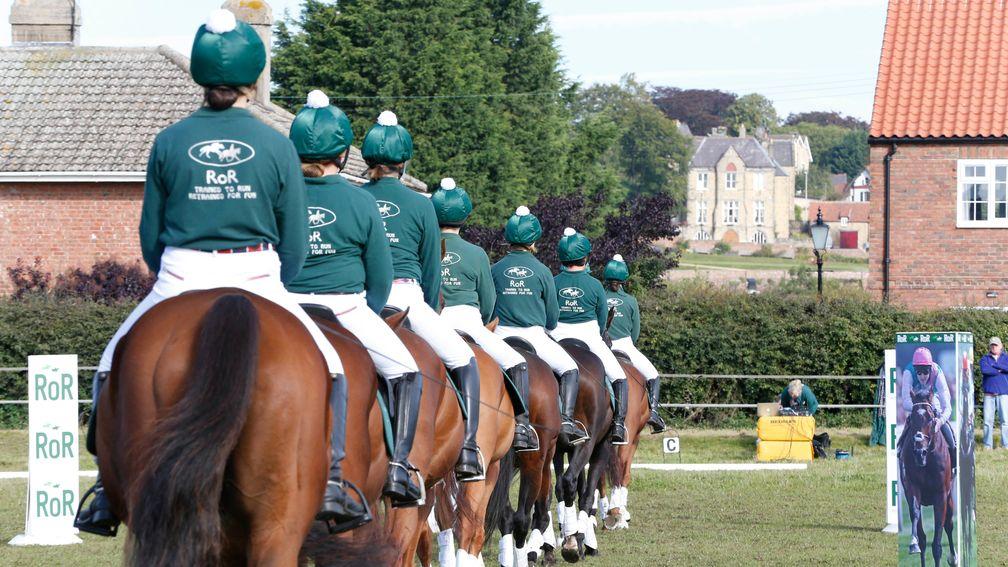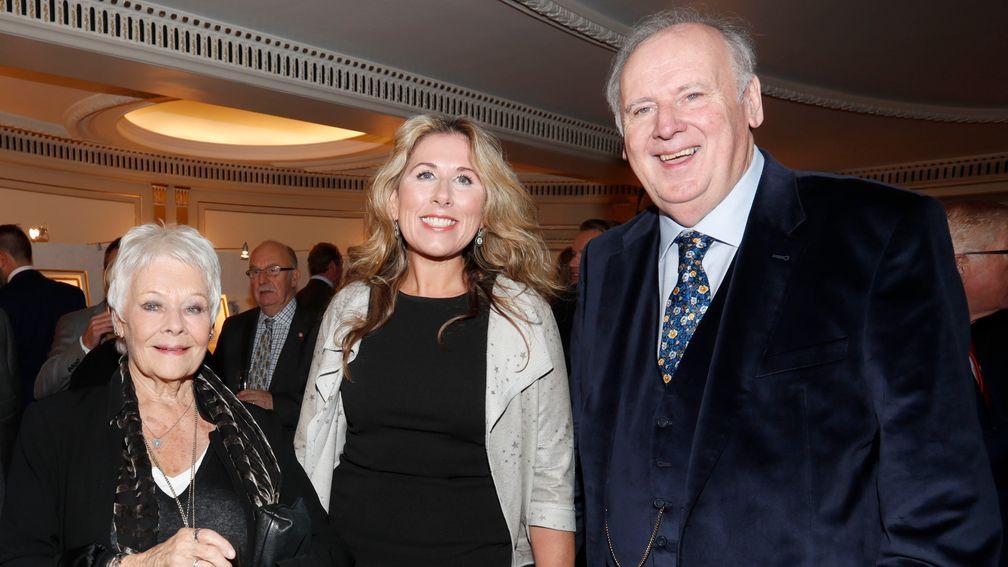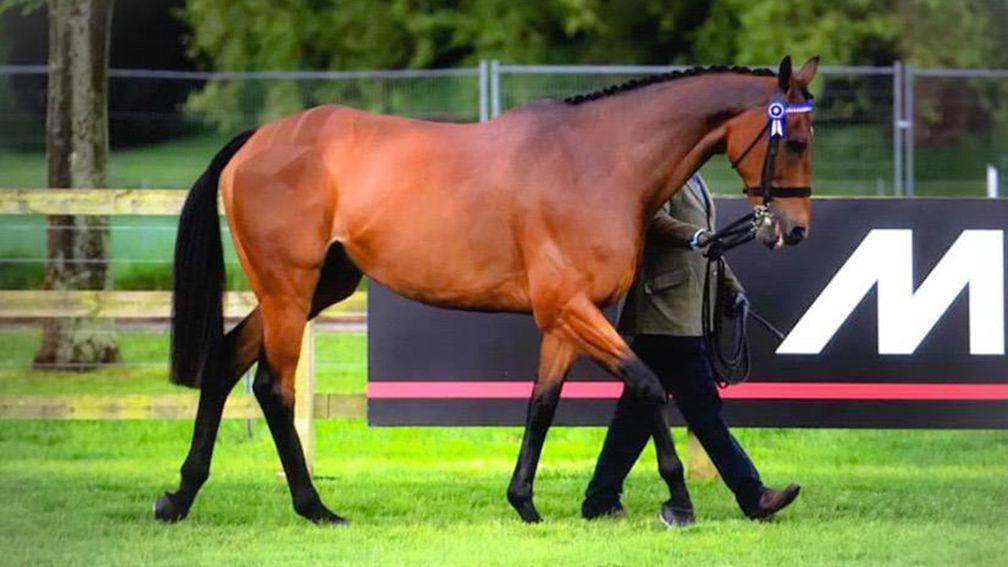Welfare centre: disaster awaits if RoR funding for ex-racehorses does not change

The chairman of the pioneering establishment that became the first in Britain set up solely to care for ex-racehorses has claimed "disaster awaits" if the sport's official welfare charity is not radically overhauled, with attention switched from staging competitions and towards helping vulnerable horses.
John Sexton, commenting on behalf of the British Thoroughbred Retraining Centre, delivered a stinging appraisal of Retraining of Racehorses, claiming the approach to funding adopted since 2015 had left welfare organisations dangerously short of money.
The BTRC, launched as The Thoroughbred Rehabilitation Centre in 1991, parted company from RoR last year and has become increasingly angry with RoR's expansion of events that have attracted a significant number of high-profile former track stars.

In a letter to the Racing Post, Sexton said: "According to their policy statement to the Charities Commission, RoR's aim is 'to promote the welfare and rehabilitation of racehorses and former racehorses which are unwanted or vulnerable to abandonment, abuse, misuse or neglect, or otherwise in need of care and attention, in particular by means of retraining and rehousing'.
"Nothing there about shows or parades of retired stars of the sport, as popular as they may be with the public. Not one of the horses appearing in any RoR show or parade is unwanted or vulnerable, so why are they spending money on them?
"Not that this would matter very much were it not for the fact RoR has paid for its achievements in promoting the skills of retired racehorses by raiding the pot it ought to be spending on welfare and rehabilitation."
After claiming direct RoR spending on welfare had dropped from being 100 per cent of its budget to around 30 per cent, Sexton said: "This has had a massively detrimental effect on the charitable centres, particularly following the universally despised contract system introduced by RoR in 2015 with very little warning.
"Contracts were imposed on all charitable centres, setting a rate per vulnerable horse and also setting a limit on total payment, thereby technically putting a limit on the number of vulnerable horses each centre could take. In the BTRC's case it was 15, even though we were often dealing with more than double that number.
"At the BTRC we need around £450,000 a year, but the maximum RoR payment is one-sixth of that and is £10,000 below what they paid the TRC in 2002. Is that the action of an organisation keen to promote the welfare and rehabilitation of racehorses and former racehorses which are unwanted or vulnerable to abandonment, abuse, misuse or neglect?
"It does, of course, beg the biggest question of all: whether it is right for a multi-million pound industry like racing to rely on charities to look after its former athletes in the first place?"
Sexton added: "Currently RoR have a strategy review under way. It is long overdue, but it needs to be radical and to readjust the balance in favour of welfare and supporting the charitable centres, otherwise disaster awaits."
In response, RoR chief executive Di Arbuthnot said: "Unfortunately, John Sexton appears to have fundamentally misunderstood the role and value of the competitions that RoR runs.
"In terms of our welfare strategy, RoR’s approach in recent years has been one of prevention being better than cure. Through education and the staging of hundreds of classes and competitions, we have succeeded in developing a genuine demand for former racehorses in the wider equestrian world. For example, over 4,000 former racehorses are registered on RoR’s database as currently active in dressage.
"Without the extensive range of competitions and classes across over a dozen different disciplines many more horses would be at risk of becoming vulnerable."
Arbuthnot added: "With regard to John’s claim about the allocation of RoR budget, the largest proportion of our 2019 budget, just under half, goes directly to welfare needs and activities. Second career events, including the series and competitions, accounts for a third of our expenditure.
"BTRC’s unilateral decision to withdraw from the funding agreement in 2017 is the reason they no longer receive funding from RoR and remain ineligible to be accredited."
Sexton also welcomed the ongoing support of the Sir Peter O'Sullevan Charitable Trust and praised BHA chief executive Nick Rust, describing him as, "almost a lone voice in recognising the danger racing is putting itself in with its attitude to aftercare, which has led to him being vilified in some quarters".
BHA head of media Robin Mounsey said: "British racing’s duty of care to its horses extends well beyond the end of their racing career. The sport is fortunate in that it has a dedicated charity for the rehoming and retraining of racehorses in the form of RoR, and this charity receives significant funding from the industry every year, which helps fund a number of accredited rehoming centres nationwide.
"British racing has recently formed a Horse Welfare Board that has the remit to develop a new welfare strategy covering the whole racing industry. The strategy will look across the whole lifetime of racehorses, before, during and after they leave the sport.
"It is important that any sport which involves the use of animals should periodically look at its approach for how animals who leave the sport are cared for."
THE LETTER IN FULL:
Dear Sir,
As Chairman of the British Thoroughbred Retraining Centre, I read Scott Burton's comment piece on retraining of racehorses (Racing Post, Tuesday) with great interest and agree entirely with his assessment that this sector needs to be given a bigger priority.
I also agree that the RoR has done a superb job in showcasing the variety of skills that former racehorses are capable of, which is laudable in itself, but is not what that organisation is supposed to be doing.
According to their policy statement to the Charities Commission, RoR's aim is "to promote the welfare and rehabilitation of racehorses and former racehorses which are unwanted or vulnerable to abandonment, abuse, misuse or neglect, or otherwise in need of care and attention, in particular by means of retraining and rehousing".
Nothing there about shows or parades of retired stars of the sport, as popular as they may be with the public. Not one of the horses appearing in any RoR show or parade is unwanted or vulnerable, so why are they spending money on them?
Not that this would matter very much were it not for the fact that RoR has paid for its achievements in promoting the skills of retired racehorses, by raiding the pot it ought to be spending on welfare and rehabilitation.
RoR, of course, does not actually retrain or rehome any horses, but funds centres that do and it is the centres that have had to take the financial hit from this policy.
In 2001, when the RoR was established - mainly in response to the Hallo Dandy scandal when the 1984 Grand National winner was taken in by the TRC after being found in a state of neglect - the organisation spent close to 100 per cent of its income on welfare.
In the latest statement of accounts issued by RoR, the spending on promotion and on the large administration team it requires has bloated the take-out to a point where only around 30 per cent of income was spent on welfare.

This has had a massively detrimental effect on the charitable centres, particularly following the universally despised contract system introduced by RoR in 2015 with very little warning.
Contracts were imposed on all charitable centres, setting a rate per vulnerable horse and also setting a limit on total payment, thereby technically putting a limit on the number of vulnerable horses each centre could take.
In the BTRC's case it was 15, even though we were often dealing with more than double that number. As a result, we had to arbitrarily halve the amount of money per horse that the RoR was willing to pay in order to maintain the numbers we were willing to support.
I should stress that this financial support is only for horses deemed 'vulnerable' by the RoR's Welfare Officer. Horses coming to centres direct from its racing owner or trainer get no financial support from RoR.
This system does not take into account the every day costs of keeping a centre going. Basic things like electricity, feed, staff costs, veterinary costs, mortgage, rates. The list goes on. You would not pay a hospital only for chronically ill patients, so why do they expect centres to be there when they need them without proper funding?
During the lifetime of the contract, I had meetings with RoR in London, along with my chief executive, in which we argued that the contract system was highly unsatisfactory for tackling the problem of vulnerable horses and in a double whammy was causing increased hardship for all the charitable centres.
At the BTRC, we need around £450,000 a year, but the maximum RoR payment is one sixth of that and is £10,000 below what they paid the TRC in 2002. Is it right that RoR's contribution has fallen when all our costs have escalated during those 17 years?
Is that the action of an organisation keen to promote the welfare and rehabilitation of racehorses and former racehorses which are unwanted or vulnerable to abandonment, abuse, misuse or neglect, or otherwise in need of care and attention?
Since May, 2018 when our contract expired, I and my fellow Trustees at the BTRC refused to sign another on the same terms. The result: RoR has cut off support for the BTRC completely, apart from a one-off payment and removed us from the list of accredited centres on their website.
We are the oldest and continue to be the biggest charitable centre in Britain. Our yard continues to be very nearly full (we always try to keep a couple of boxes free for absolute emergencies) and we continue to send horses out on loan. We now have well over 200 on loan around the country which need to be checked on a regular basis by our team of field officers.
Yet, we are not accredited nor have we been given any financial support by the RoR this year. It seems that as far as they are concerned, it is not the quality of the job you do, but whether you will sign a contract that determines whether you should be an accredited centre. Is that the responsible approach of a world leader in its field? I think not
Nor is it just the BTRC which is suffering. Scott mentioned that the Malvern-based Racehorse Welfare Centre is closing its doors. More will inevitably follow unless there is a radical and rapid change of system as we are all under immense pressure. Moorcroft is struggling and HEROS has already all but abandoned retraining to concentrate on the better rewarded area of education.
And if all the charitable centres go, who then will pick up those vulnerable horses, many of which are not the star names mentioned in Scott's column? What will racing do with those workaday horses who simply lacked the speed or the talent to be winners on the track, but would have a long and happy life as someone's hack? Shoot them?
Does this sound like a situation that is "light years ahead" of when RoR was granted charitable status at the start of the Millennium?
It does, of course, beg the biggest question of all: whether it is right for a multi-million pound industry like racing to rely on charities to look after its former athletes in the first place.
In March, 2018 in an interview in The Bloodhorse, this question was put to Susanna Thomas, the Executive Director of the Maker's Mark Secretariat Centre which is an aftercare centre in the US and her response was "...aftercare is not a charity issue. Aftercare is essential to the health and longevity of this sport". I totally agree.
It was for that reason, I offered the BTRC to racing. We have planning permission in place to double the size of the yard to 80 boxes and for accommodation, offices and a state of the art outdoor arena, which would be a retrainer's dream and ideal for the shows RoR loves. We just don't have the finance although we are working on it.
But if the racing industry wanted to take it on, then I and as many of my fellow Trustees as necessary would stand down to be replaced by industry-nominated board members giving racing the showpiece retraining centre it needs and with total control. As yet, I received no response.
One other thought, if, as Scott suggested, RoR is a world leader in its field, why was there any need for the BHA to form a separate Welfare Committee earlier this year and why did the RoR's newly-appointed Welfare Officer Jeremy Martell resign after only a couple of weeks in the job?
Finally, I want to pay tribute to Sir Peter O'Sullevan, for so long our patron and benefactor whose support continues through the Trust he founded and also to BHA Chief Executive Nick Rust, who is almost a lone voice in recognising the danger racing is putting itself in with its attitude to aftercare, which has led to him being vilified in some quarters.
What everyone with racing's good at heart needs to remember is that it is not the star names that need help. There will always be a competent person happy and able to give them a home. Nor, by and large, is it the horses that come straight out of a trainer's yard that are a concern.
It is the horses that are taken by inexperienced riders, who find them too difficult and so sell on often to someone even less capable. And so they pass from owner to owner, condemned as 'problem horses' often through no fault of their own.
These along with the older horses whose owners have hit hard times so that they can no longer support them are the ones that have the potential to embarrass the sport by becoming abused or neglected and these are the ones only the charitable centres will take.
Currently, the RoR have a strategy review under way. It is long overdue, but it needs to be radical and to readjust the balance in favour of welfare and supporting the charitable centres otherwise disaster awaits.
John S Sexton
Chairman, British Thoroughbred Retraining Centre
Read The Lowdown from 8.30am daily on racingpost.com and the Racing Post mobile app with all the day's latest going, weather, market moves and non-runner news
Published on 2 September 2019inNews
Last updated 12:16, 3 September 2019
- The latest edition of the Racing Post is available to read online now - here's how you can access it
- How Smart View recorded a 76 per cent profit at the Cheltenham Festival
- Smart View is available on the Racing Post app - how to read the revolutionary new racecard
- Levy reform talks 'accelerating' as clock ticks down to April deadline for agreement
- Kieran Shoemark lands another plum Meydan ride for Gosden stable on Trawlerman in Saturday's Dubai Gold Cup
- The latest edition of the Racing Post is available to read online now - here's how you can access it
- How Smart View recorded a 76 per cent profit at the Cheltenham Festival
- Smart View is available on the Racing Post app - how to read the revolutionary new racecard
- Levy reform talks 'accelerating' as clock ticks down to April deadline for agreement
- Kieran Shoemark lands another plum Meydan ride for Gosden stable on Trawlerman in Saturday's Dubai Gold Cup